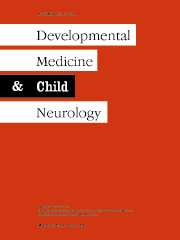Article contents
Validity and reproducibility of a new diagnostic motor performance test in children with suspected myopathy
Published online by Cambridge University Press: 19 December 2005
Abstract
To spare more children from painful muscle biopsy, a new non-invasive diagnostic motor performance test is undergoing development. Fifteen functional items were used to measure muscle strength and muscle endurance in 68 patients (47 males, 21 females; mean age 7y 8mo, SD 2y 2mo; range 4 to 11y), who had been referred to our specialist centre in the past 3 years on suspicion of myopathy. All the patients had undergone muscle biopsy. To correct the patients' outcomes for age, sex, and body size, regression prediction equations were obtained from a stratified random sample of 64 normally developing primary-school children aged 4 to 11 years (32 males, 32 females; mean age 8y 1mo, SD 2y 4mo). Feasibility was evaluated on the basis of five criteria. Validity was assessed using logistic regression analysis, receiver operating characteristic analysis, and sensitivity and specificity at a specifically chosen cut-off point. Reproducibility was evaluated by test–retest reliability in a stratified random sample of 40 patients who returned for re-measurements using the intraclass correlation coefficient. Seven items satisfied all five feasibility criteria, had high diagnostic power, and high test–retest reliability. The motor performance test can improve diagnostic procedure in children suspected of having myopathy.
- Type
- Original Articles
- Information
- Copyright
- © 2006 Mac Keith Press
- 6
- Cited by


